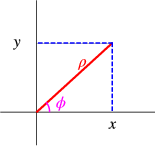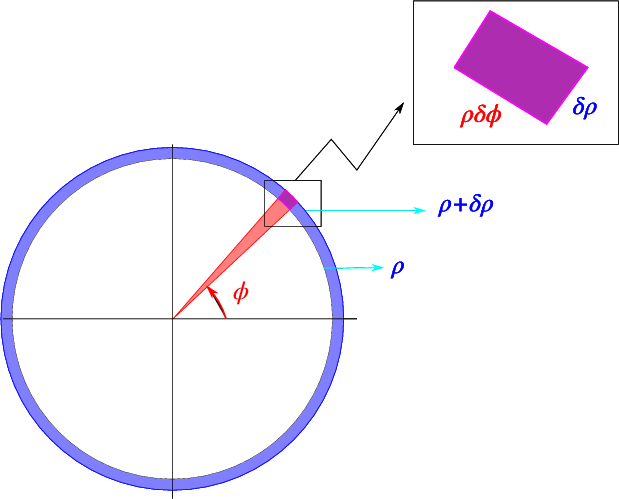7.1: Polar Coordinates
- Last updated
-
Jul 4, 2022
-
Save as PDF
-
Polar coordinates in two dimensions are defined by as indicated schematically in Fig. .
 Figure : Polar coordinates
Figure : Polar coordinates
Using the chain rule we find
We can write
where the unit vectors
are an orthonormal set. We say that circular coordinates are orthogonal.
We can now use this to evaluate ,
A final useful relation is the integration over these coordinates.
 Figure : Integration in polar coordinates
Figure : Integration in polar coordinates
As indicated schematically in Fig. , the surface related to a change , is . This leads us to the conclusion that an integral over can be rewritten as




